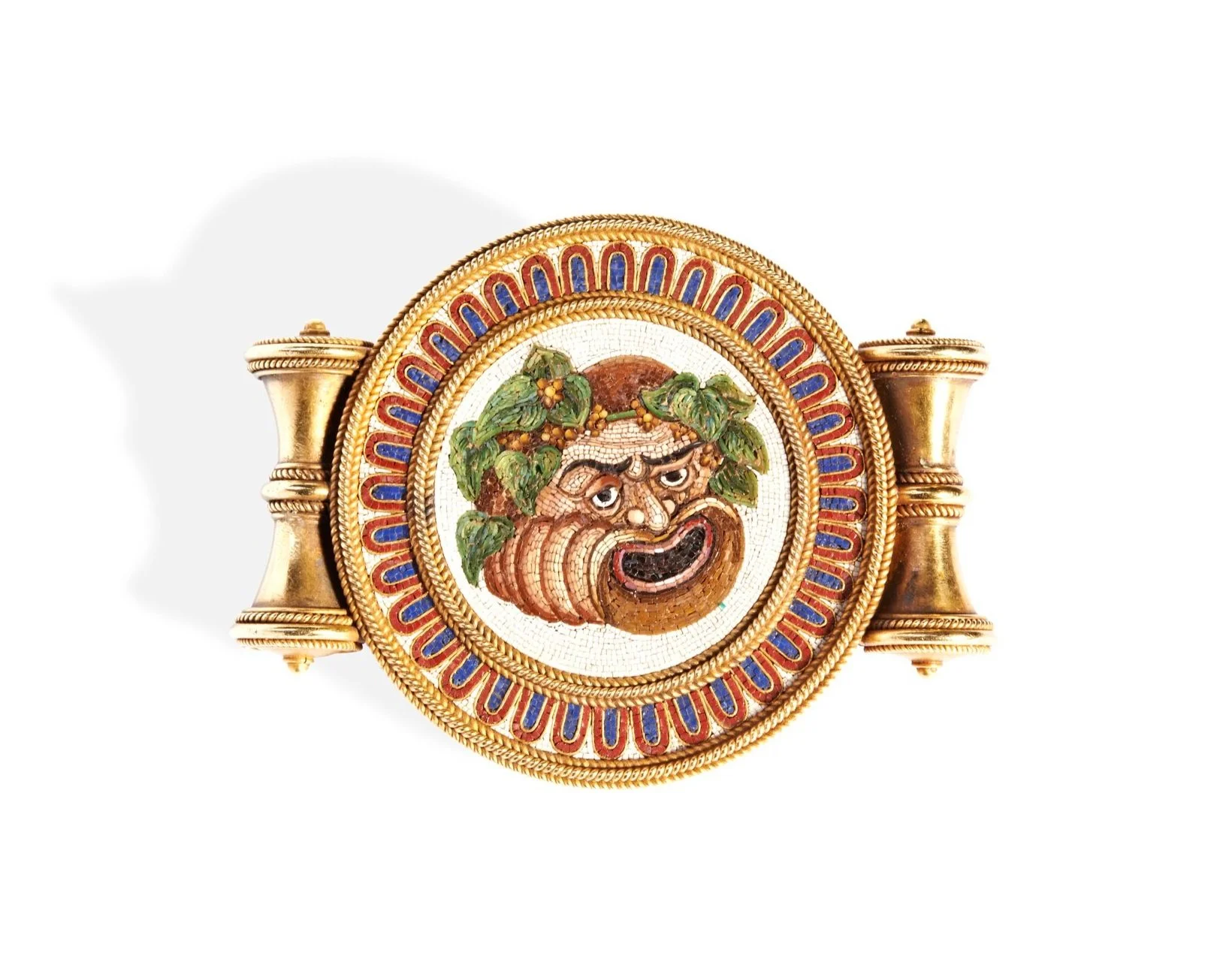rare castellani brooch set to beguile collectors
a delightful head of a theatre mask continues to charm and beguile the collector with a very rare opportunity to acquire it
Essential to the art lover’s itinerary in Rome was the beautiful Baroque marble fountain at the centre of the Piazza Fontan di Trevi. It was famous not only for it’s own spectacular qualities but also because a single coin tossed into the churning waters assured a safe return to the Eternal City. With this small act of faith successfully performed the attention of the Grand Tourist was invariably caught by Castellani’s famous jewellery shop to the right of the fountain.
Against all odds the building survives almost intact; even the incised sign above the door is legible to this day and the original painted walls and coloured stone floors remain: silent witnesses to a clientele composed of the elite in archaeology, art, literature, music, politics, industry, aristocracy and even royalty. Visitors to Castellani were required to sign the visitors book and amongst the thousands that did so were the poets Robert and Elizabeth Browning, the composer Gioachino Rossini and Queen Victoria’s daughter Princess Alice with her husband Prince Louis of Hesse.
The contemporary elite of European Society came to see Castellani’s remarkable collection of ancient Etruscan and Roman jewellery and the contemporary ornaments made in homage to them. These modern jewels were the products of a school of jewellery, founded by Fortunato Pio Castellani (1794-1865) and known as Italian Archaeological Jewellery.
However Castellani’s purpose-built premises were not simply a private museum of ancient and modern jewellery but a thriving business conducted by two of Fortunato’s sons: Alessandro (1823-1883) and Augusto (1929-1914). It was they who offered tray upon tray of gold ornaments in the antique taste, decorated with filigree, granulation, scarabs, cameos, enamel and micro-mosaics. In every case artistic value superseded the intrinsic and sometimes these jewels were elaborate, even theatrical.
Customers who were less confident about their own taste felt safe in the knowledge that every one of Castellani’s jewels was based securely on the antique. These included rich yellow gold necklaces hung with double rows of amphora, bracelets set with genuine Etruscan engraved gems, ivory hair pins tipped in gold and fibulae in the Roman taste. The meticulous craftsmanship of the micro mosaics, made under the guidance of Luigi Podio (1851-1888), always generated universal curiosity amazement. Based on Roman and Byzantine prototypes they were some of the most colourful and figurative of Castellani’s creations. The subject matter of these minute works of art often included conspicuously Christian symbolism derived from the mosaics Rome and Ravenna but the pagan past was also represented.
Here in the present sale lot 151, a delightful head of a theatre mask continues to charm and beguile the collector with a very rare opportunity to acquire it.
Geoffrey Munn OBE, MVO.
ARCHAEOLOGICAL-REVIVAL GOLD AND MICROMOSAIC THEATRICAL MASK BROOCH BY CASTELLANI, POSSIBLY BY LUIGI PODIO, circa 1850
SOLD: £80,600
JEWELLERY, WATCHES AND OBJECTS OF VERTU
6 July 2022
10:30am
Sold prices include fees

